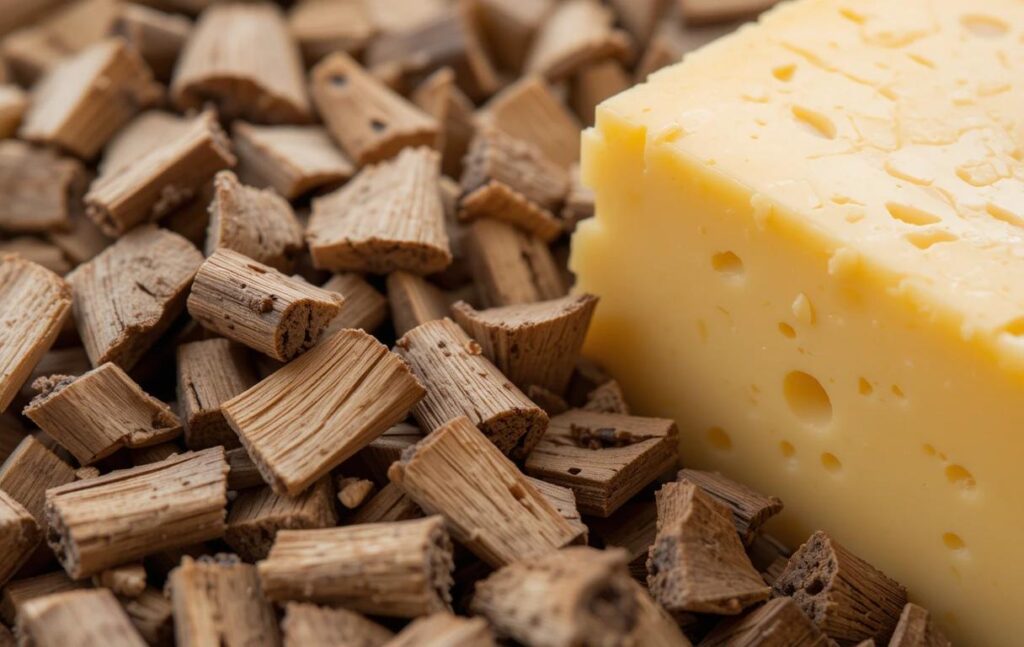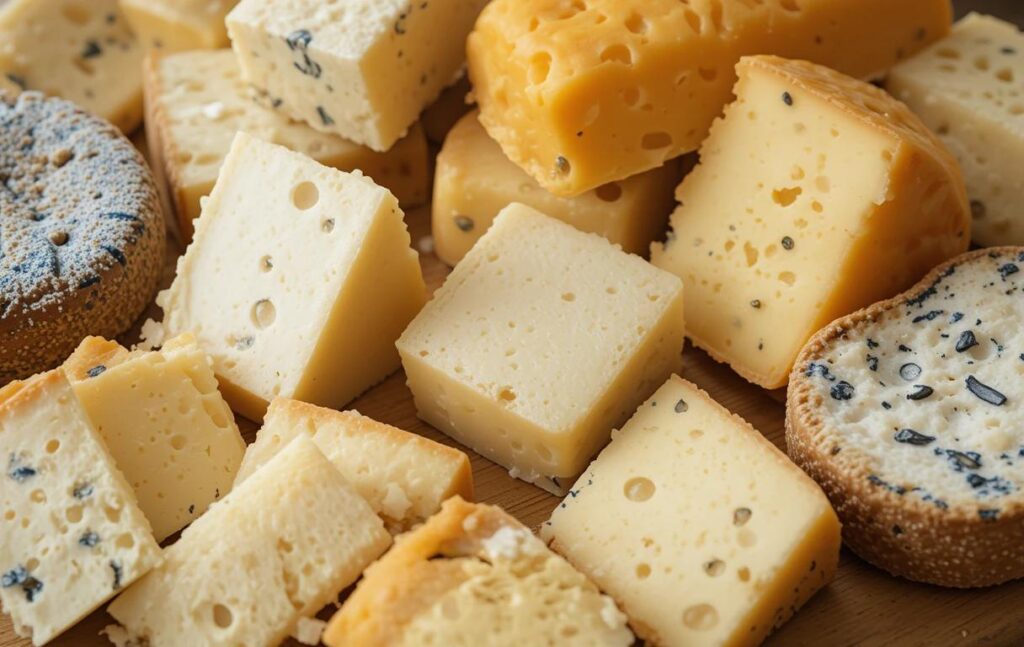What Wood Is Best for Smoked Queso? Top Picks for Flavorful Results
Smoked queso has quickly become a favorite among food enthusiasts who love combining creamy cheese with rich, smoky flavors. But achieving the perfect smoked queso isn’t just about choosing the right cheese or smoker setup—it’s also about selecting the best wood. The wood you choose plays a pivotal role in enhancing the queso’s flavor, aroma, and overall appeal. So, what wood is best for smoked queso? Let’s explore this essential question to elevate your next cookout or family gathering.
Why Smoked Queso Deserves Attention
Smoked queso isn’t just a dip; it’s a culinary experience. Traditional queso dip is already a crowd-pleaser, but the addition of smoky notes takes it to the next level. The smoking process infuses the cheese with a depth of flavor that transforms it into a versatile dish perfect for parties, game days, or outdoor barbecues. Beyond flavor, smoked queso offers endless customization opportunities, allowing you to incorporate ingredients like jalapeños, bacon, and onions to suit your taste.
For anyone looking to impress their guests, understanding the nuances of wood selection can make all the difference in creating a truly unforgettable smoked queso.
The Role of Wood in Smoking Queso
When smoking any dish, the type of wood you use directly impacts the final flavor. For queso, a creamy and often mild-flavored dish, it’s essential to strike the right balance. Too strong a wood can overpower the queso, while a subtler choice might complement its natural flavors.
Woods like hickory, applewood, cherrywood, and pecan are top choices, each offering unique qualities that enhance the dish. Understanding their characteristics can help you achieve the desired flavor profile.
Factors to Consider When Choosing Wood
Selecting the right wood for smoked queso involves more than just picking a random bag of chips. The choice depends on several factors, each playing a crucial role in the final taste and quality of your queso. Let’s dive into the main considerations to help you make an informed decision.
Flavor Intensity
Different woods produce varying levels of smokiness, ranging from mild to bold. For queso, which has a creamy and delicate base, finding the right intensity is key.
- Mild Woods: Applewood and cherrywood are perfect for those who prefer subtle, sweet, and fruity notes that don’t overshadow the cheese.
- Medium Woods: Pecan strikes a balance between sweet and nutty, offering a smooth profile that pairs well with queso.
- Bold Woods: Hickory provides a robust, smoky flavor, ideal for those looking to add depth to their dish.
By choosing a wood that aligns with your flavor preferences, you can ensure your smoked queso has the perfect balance.
Compatibility with Cheese
Queso’s creamy and mild nature makes it a versatile dish, but it also means some woods may clash with its flavor. For instance:
- Soft Cheeses (e.g., Velveeta, cream cheese): These pair well with mild or medium woods like apple or pecan to complement their subtle flavors.
- Sharp Cheeses (e.g., cheddar, Monterey Jack): Bolder woods like hickory can stand up to the intensity of sharper cheeses, creating a robust smoky experience.
Understanding the cheese you’re using can help you select a wood that enhances its natural flavors rather than overpowering them.
Smoking Duration and Wood Burn Rate
The time required to smoke queso typically ranges from 30 to 60 minutes. Some woods burn faster than others, which can affect your smoking experience:
- Quick Burners: Lighter woods like applewood and cherrywood tend to burn faster and are excellent for short smoking sessions.
- Slow Burners: Denser woods like hickory and pecan burn longer, making them suitable for extended smokes if you’re preparing a larger batch of queso.
Ensuring that your chosen wood matches the smoking time is vital to achieving the right flavor without over- or under-smoking the dish.
Allergies and Preferences
If you’re serving smoked queso to a group, it’s worth considering potential allergies or flavor sensitivities. For example, pecan, while delicious, may not be suitable for those with nut allergies. Opting for a universally safe wood like cherrywood can keep everyone happy.
Best Woods for Smoking Queso

Choosing the right wood for smoked queso can transform an already delicious dish into something extraordinary. Below, we’ll explore some of the best woods to use, highlighting their unique characteristics and how they complement the creamy richness of queso.
Hickory: Bold and Smoky
Hickory is a classic choice for smoking, loved for its bold, robust flavor. It produces a rich, earthy smokiness that pairs well with sharp or spicy ingredients often found in queso, such as jalapeños, smoked paprika, or chili powder.
Best For:
- Recipes featuring bold flavors, like spicy or chipotle-infused queso.
- Sharp cheeses like cheddar or blends with Monterey Jack.
Tip: Use hickory sparingly if you prefer a milder smoke, as its strong flavor can easily overpower delicate cheeses.
Applewood: Sweet and Subtle
Applewood is known for its mild, fruity aroma and sweet undertones. This wood is ideal if you want to add a subtle layer of smokiness that enhances, rather than masks, the natural creaminess of the queso.
Best For:
- Queso made with soft, mild cheeses like Velveeta or cream cheese.
- Recipes incorporating sweeter ingredients, such as caramelized onions or sweet peppers.
Tip: Applewood works well for family gatherings where a universally appealing flavor is desired.
Cherrywood: Fruity and Vibrant
Cherrywood offers a slightly stronger fruity flavor compared to applewood, but it remains mild enough to avoid overpowering the queso. Its unique vibrancy makes it a great option for adding depth and a hint of sweetness to your smoked queso.
Best For:
- Balanced flavor profiles that include savory and sweet ingredients.
- Pairing with medium cheeses like Colby or queso blanco.
Tip: Cherrywood’s beautiful red-hued smoke also gives queso an appetizing appearance.
Pecan: Nutty and Smooth
Pecan wood is a favorite among BBQ enthusiasts for its nutty, slightly sweet profile. It provides a smooth, balanced flavor that’s particularly suited to creamy dishes like queso.
Best For:
- Traditional queso recipes with simple ingredients.
- Blends with American or Mexican cheeses.
Tip: Combine pecan with a small amount of hickory for a unique, layered smoky taste.
Alder: Mild and Delicate
Although less commonly used, alder is a great option for queso if you’re looking for an ultra-mild smokiness. Its delicate flavor lets the cheese and other ingredients shine, making it a safe choice for those new to smoking.
Best For:
- Simple queso recipes that rely on the cheese’s natural flavor.
- Experimenting with lighter cheeses like mozzarella.
Tip: Alder burns quickly, so ensure you have enough wood chips for the smoking duration.
Woods to Avoid for Smoking Queso
While many types of wood are excellent for smoking queso, some are better left out of the equation. These woods can overpower the queso’s delicate flavors or introduce unpleasant tastes that detract from the dish. Understanding which woods to avoid is just as important as knowing the best ones.
Pine and Other Softwoods
Softwoods like pine, cedar, and fir are unsuitable for smoking food. These woods are high in resin, which can produce harsh, bitter flavors and even toxic smoke when burned. The resin also creates excessive soot, which can coat your queso with an unpleasant residue.
Why Avoid Them?
- Resinous smoke leaves a bitter, chemical-like taste.
- Can pose health risks when inhaled or ingested.
Alternative: Stick to hardwoods like applewood or pecan for clean, flavorful smoke.
Mesquite: Too Bold for Queso
Mesquite is known for its intensely bold and earthy flavor, which works well for strong meats like beef brisket. However, its overpowering smokiness can easily dominate the subtle flavors of queso, making it an unsuitable choice.
Why Avoid It?
- Overwhelms the creamy, mild nature of queso.
- Leaves a lingering, sharp aftertaste that clashes with cheese.
Alternative: For a milder boldness, try hickory or a pecan-hickory blend.
Eucalyptus and Other Non-Food Woods
Some exotic woods, like eucalyptus, might seem intriguing but are not safe for smoking food. These woods often contain natural oils and compounds that can make food taste medicinal or chemical-like.
Why Avoid Them?
- Produce unpalatable flavors.
- Potential health hazards from burning non-food-safe woods.
Alternative: Consider a blend of cherrywood and applewood for a fruity and safe alternative.
Green or Unseasoned Wood
Using wood that hasn’t been properly dried or seasoned is another common mistake. Green wood retains high moisture levels, resulting in excessive smoke that is often thick and acrid.
Why Avoid It?
- Creates bitter, sooty smoke.
- Difficult to maintain consistent heat levels.
Alternative: Always use dry, seasoned wood chips or pellets for the best smoking results.
Techniques for Smoking Queso with Wood

Smoking queso is a straightforward process, but the right technique can take your dish from good to unforgettable. Below is a step-by-step guide to help you achieve the perfect smoky flavor while maintaining the queso’s creamy consistency.
1. Prepping Your Smoker
Before you start, proper smoker preparation is essential to ensure even cooking and optimal smoke infusion.
- Clean the Smoker: Begin with a clean smoker to avoid introducing off-flavors from previous uses.
- Select the Right Wood Chips: Choose a mild or medium wood, such as applewood or pecan, for a balanced smoky flavor.
- Pre-Soak Wood Chips (Optional): Soaking chips in water for 30 minutes can help control the burn rate, especially for shorter smoking sessions.
Steps to Prepare the Smoker:
- Preheat the smoker to 225°F (107°C). This is an ideal temperature to melt cheese slowly without burning it.
- Add wood chips to the smoker box or directly to the charcoal, ensuring good airflow.
- Wait for the smoke to turn light and blue, which indicates clean-burning wood.
2. Preparing the Queso for Smoking
The base of your queso will determine how well it absorbs the smoky flavor. Here’s how to prepare it:
- Choose the Right Dish: Use a cast iron skillet or an aluminum foil pan. Cast iron retains heat well and distributes it evenly, while foil pans are disposable for easy cleanup.
- Layer the Ingredients: Combine your cheese base (like Velveeta or cheddar) with other ingredients like diced tomatoes, onions, jalapeños, or cooked ground beef. This layering ensures even melting and flavor infusion.
- Cover for the First Half: To prevent the top layer from drying out, cover the queso with foil for the first 20–30 minutes.
3. Smoking the Queso
With your smoker and ingredients ready, it’s time to begin smoking.
Step-by-Step Smoking Process:
- Place the prepared dish of queso onto the smoker’s rack, ensuring it’s not too close to the heat source.
- Monitor the smoker temperature, keeping it steady at 225°F.
- Smoke the queso for 30–60 minutes, depending on the level of smokiness desired. Stir the mixture every 15 minutes to ensure even melting and smoke distribution.
- For added flavor, mix in small amounts of additional wood chips during the smoking process.
4. Timing and Temperature Tips
Maintaining the right balance of heat and time is crucial for the perfect texture and flavor.
- Target Temperature: Aim for a melted, smooth queso at around 160–170°F (71–77°C).
- Avoid Over-Smoking: Queso can become overly smoky if left in the smoker for too long. Taste-test after 30 minutes to decide if more time is needed.
5. Experimenting with Wood Blends
Blending wood types is a great way to customize the flavor of your smoked queso. For example:
- Combine applewood and cherrywood for a sweet and fruity profile.
- Mix pecan and hickory for a nutty yet bold flavor.
Experimenting with blends allows you to tailor the smokiness to your personal preferences or the occasion.
Enhancing Smoked Queso with Ingredients
The smoky flavor from the wood is just the foundation of your smoked queso. To make it truly unforgettable, it’s essential to pair it with the right ingredients. From spicy add-ins to savory toppings, here’s how to elevate your queso to the next level.
1. Cheese Selection: The Core of Your Queso
Choosing the right cheese sets the stage for the texture and flavor of your smoked queso. While processed cheeses like Velveeta ensure a smooth consistency, combining them with other varieties can add depth.
- Cheddar: Offers a sharp, tangy flavor and pairs beautifully with bold woods like hickory.
- Monterey Jack: A mild, creamy cheese that balances fruity woods like cherry or applewood.
- Pepper Jack: Adds a kick of spice, complementing medium-intensity woods like pecan.
- Queso Fresco: Ideal for blending with softer cheeses, creating a lighter, more authentic Mexican flavor.
Pro Tip: Mix and match cheeses for a layered flavor profile—sharp cheddar for tanginess, Monterey Jack for creaminess, and a bit of queso fresco for authenticity.
2. Smoky Ingredient Pairings
Enhancing the smokiness of your queso can be achieved by incorporating ingredients that naturally complement the flavor of the wood.
- Smoked Meats: Add cooked and crumbled bacon, sausage, or pulled pork for a savory boost.
- Spices and Seasonings: Smoked paprika, chipotle powder, or cumin can amplify the smoky aroma.
- Roasted Vegetables: Charred or roasted jalapeños, onions, and bell peppers bring a depth of flavor and texture.
Tip: Dice and sauté vegetables before adding them to the queso for even distribution and a more cohesive flavor.
3. Spicy Additions for a Flavorful Kick
Spice lovers can turn up the heat in their smoked queso with these add-ins:
- Jalapeños: Fresh, pickled, or roasted, these peppers are a classic choice.
- Hatch Green Chiles: Add a mild heat with a slightly sweet undertone, perfect with pecan or applewood.
- Hot Sauce: A dash of your favorite hot sauce can bring both heat and tang to the mix.
- Chipotle Peppers in Adobo Sauce: These provide a smoky, spicy depth that pairs beautifully with hickory.
4. Toppings to Finish the Dish
The right toppings can enhance the visual appeal and taste of your smoked queso. Consider these ideas:
- Fresh Garnishes: Cilantro, green onions, or diced tomatoes add color and freshness.
- Crunchy Elements: Crumbled tortilla chips or crispy bacon bits create a satisfying texture contrast.
- Creamy Additions: A dollop of sour cream or guacamole can balance out the smokiness and spice.
Tip: Serve the toppings on the side to let guests customize their queso experience.
5. Pairing Smoked Queso with Sides
No smoked queso is complete without the perfect sides. Serve it alongside:
- Tortilla Chips: The classic pairing for dipping.
- Grilled Bread: Slices of baguette or sourdough grilled with a touch of garlic butter.
- Vegetables: Carrot sticks, celery, or grilled zucchini for a lighter, healthier option.
6. Experimenting with Unique Ingredients
Take your smoked queso up a notch by experimenting with unique flavors.
- Beer or Ale: Add a splash for a tangy, malty undertone.
- Crab or Shrimp: Incorporate seafood for a creamy, coastal-inspired queso.
- Fruits: Diced mango or pineapple can add a surprising, refreshing sweetness.
Tip: Start with small amounts of unique ingredients to avoid overwhelming the dish and adjust to taste.
FAQs About Smoking Queso

Smoking queso is a fun and flavorful process, but it often comes with questions, especially for beginners. Below are some of the most frequently asked questions about what wood is best for smoked queso and how to perfect the dish.
1. Can I Use Pellets Instead of Wood Chips?
Yes, you can use wood pellets instead of wood chips for smoking queso, especially if you have a pellet smoker. Pellets burn evenly and consistently, making them a convenient choice for maintaining steady smoke and heat.
Best Pellets for Smoked Queso:
- Applewood for mild sweetness.
- Hickory for a robust, smoky flavor.
- Cherrywood for a fruity aroma.
Tip: Use food-grade pellets to ensure no additives interfere with the queso’s taste.
2. How Long Should I Smoke Queso?
The smoking time for queso typically ranges from 30 to 60 minutes, depending on your desired level of smokiness and the temperature of the smoker.
- For Light Smokiness: Smoke for 30 minutes, stirring halfway through.
- For Bold Smokiness: Smoke for 60 minutes, adding a handful of wood chips midway for sustained smoke.
Tip: Monitor the queso’s texture to ensure it melts smoothly without becoming overly smoky.
3. Does the Type of Cheese Affect Wood Choice?
Yes, the cheese you use can influence which wood works best. Mild cheeses pair better with softer woods, while sharper cheeses can handle bolder flavors.
- Soft, Creamy Cheeses (e.g., Velveeta, cream cheese): Pair well with applewood or cherrywood for subtle smokiness.
- Sharp Cheeses (e.g., cheddar, Pepper Jack): Stand up to bold woods like hickory or pecan.
Tip: For mixed cheese recipes, opt for a medium-intensity wood like pecan to complement all flavors.
4. Can I Smoke Queso Without a Smoker?
Absolutely! If you don’t own a smoker, you can create a similar effect using a gas or charcoal grill.
Steps for Smoking Queso on a Grill:
- Use indirect heat by placing a foil pan of queso on the side of the grill opposite the heat source.
- Add a handful of soaked wood chips to a smoker box or directly onto the coals.
- Cover the grill and follow the same smoking time as you would with a traditional smoker.
Tip: Maintain a steady temperature of 225°F for best results.
5. What’s the Best Way to Store Leftover Smoked Queso?
Smoked queso can be stored in an airtight container in the refrigerator for up to 3–4 days. To reheat:
- Microwave: Heat in 30-second intervals, stirring between each round.
- Stovetop: Warm over low heat, adding a splash of milk or cream to restore creaminess.
Tip: Avoid reheating multiple times, as this can affect the texture and flavor.
6. Can I Blend Different Woods for Smoking Queso?
Yes! Blending woods is a fantastic way to customize the flavor of your smoked queso. For example:
- Applewood + Hickory: Combines mild sweetness with a hint of boldness.
- Cherrywood + Pecan: Offers a fruity, nutty profile perfect for creamy queso.
Tip: Experiment with small batches to find your preferred combination.
Crafting the Perfect Smoked Queso: Final Thoughts
Creating the perfect smoked queso is an art that combines the right ingredients, wood selection, and technique. By carefully choosing your wood—whether it’s the boldness of hickory, the fruity sweetness of applewood, or the nutty smoothness of pecan—you can transform a simple dip into a show-stopping dish.
Key Takeaways for Smoked Queso Success
- Choose the Right Wood: Select woods that complement queso’s creamy texture. Applewood and cherrywood are great for mild smokiness, while hickory or pecan offer bolder profiles.
- Prepare Thoughtfully: Use a smoker, grill, or pellet smoker, ensuring a consistent temperature of around 225°F. Stir frequently to evenly distribute smoke and maintain the queso’s texture.
- Experiment with Ingredients: Add layers of flavor with meats, vegetables, and spices. Don’t hesitate to try creative additions like beer or seafood for a unique twist.
- Avoid Common Mistakes: Steer clear of resin-heavy softwoods, overly bold woods like mesquite, or green wood that produces acrid smoke.
- Personalize Your Flavor: Blend different wood types or experiment with various cheeses to create a queso that reflects your taste preferences.
Why Smoked Queso is Worth the Effort
Smoked queso is more than just a dip; it’s a conversation starter and a culinary masterpiece that brings people together. Whether you’re hosting a backyard barbecue, celebrating a game day, or simply looking for a new way to enjoy cheese, smoked queso offers endless opportunities for creativity and flavor.
With the tips and techniques outlined in this guide, you’re well-equipped to craft a dish that’s both crowd-pleasing and uniquely yours.
Suggested Pairings and Serving Ideas
- Serve with tortilla chips, warm pretzels, or grilled vegetables for a variety of dipping options.
- Pair with cold drinks like beer or iced tea to balance the queso’s smoky richness.
- Use smoked queso as a topping for nachos, baked potatoes, or burgers for a flavorful twist.
Campfire Queso
Related Recipes
- “Tuna Tomato Sauce Pasta Recipe“: A tomato-based recipe showcasing another way to use tomatoes.
- “Baked Chicken Fettuccine Alfredo with Broccoli“: Another comforting dish that can be complemented with tomato-based sauces.
Ingredient-Focused Content
- “Lions Mane Mushroom Recipe“: Suggest using a tomato gravy as a flavorful addition for plant-based dishes.
Cooking Techniques and Enhancements
- “Mango Habanero Salsa“: Explore complementary uses of sauces and gravies for flavor diversity.
Storage and Reuse Tips
- “Sous Vide Recipes“: Recommend tomato gravy as a sauce for sous vide-cooked meats or vegetables.
- “Ocean Spray Cranberry Sauce Recipe“: Guide readers on making and storing sauces, including tomato gravy.

